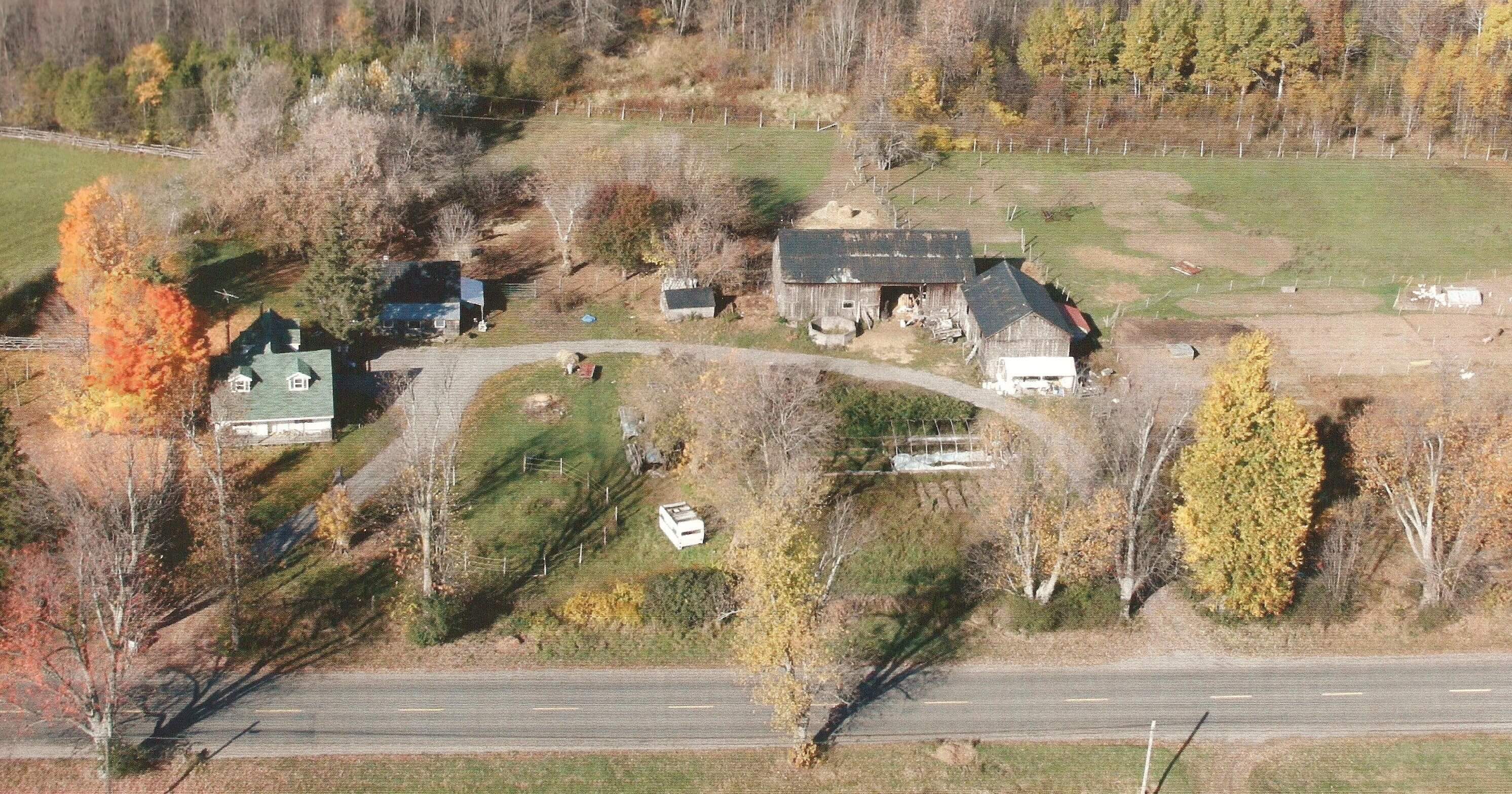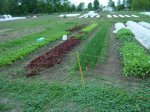How to Raise a Pig
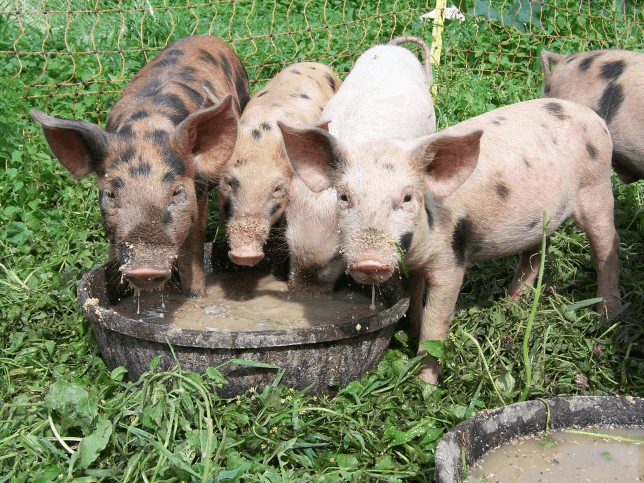 The usual suspects
The usual suspectsI might have called this article 'Sustainable Swine' or 'Bootstrap Bacon' but 'How to Raise a Pig' is probably less confusing.
Although I don't recommend raising 'a' pig; pigs are social animals and do better with companions, so raise at least two at a time.
Pigs are natural foragers, and letting them roam on pasture and root in the soil allows them to follow their natural instincts. When you don't frustrate those instincts you reduce stress on the animal and promote overall health and well-being.
Unlike confinement systems that create an environmental hazard, properly managed pasture-based systems contribute to soil health, creating a symbiotic relationship between your pigs and the land.
On our farm we do batches of between 4 and 8 piggies at a time depending on customer demand and how busy we are with other farm stuff.
This article will explain how we raise our piggies in an environmentally-friendly and economically-sustainable - i.e. profitable - way, and and integrate that with our market garden and other livestock.
Getting Started with Pasture-Raised Pigs
My most important piece of advice, if just starting out raising pigs: Don't start with breeding stock. Breeding pigs is another, much more labour and capital-intensive business, requiring year-round secure housing and manure management.
Raising weaned piglets - weaners- on pasture in the non-snow months is a much cheaper way to get started. The weaners will require only rudimentary shelter to provide shade from the sun.
So get a couple weaners from a local source, preferably a local pig farmer.
The farmer should have castrated the little boars and given the piggies the iron shot they need to combat anemia. Piglets are born without enough iron reserves at birth and sow milk is low in iron.
Work your network and call around to find a source for your weaners, well in advance of your growing season. Around here they sell out pretty quickly and you want to get on the list as soon as possible.
What about breed? When I'm looking for weaners I'm more concerned about the source rather than the breed of pig. I've raised British Large Blacks, Tamworths, and any number of cross-breeds. They all did fine on pasture with supplemental feed.
While you are looking for your piggies, also seek out a feed supplier. You'll want to have feed on hand when you bring your weaners home.
And, find a local abattoir that will take your finished pigs in for the kill, cut and wrap. Don't wait, you want to have this lined up well ahead of time.
How to Raise a Pig - The Setup
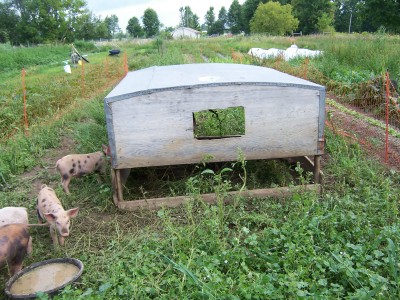
In the picture above you can see the two key pieces of my pig-raising system. 1 - the VERY rudimentary home-built pig hut to provide shade and shelter; and 2 - the electric mesh fencing that keeps the piggies where I want them, and out of where I don't i.e. my garden.
I bought that pig hut at a farm auction for $2; it started life as a home-made truck cap. I added a couple scrap boards to raise the height a bit, and it has been home to many batches of pastured piggies over the last couple decades. The point being, you don't need much in the way of shelter to get started.
The little piggies learn very quickly not to touch the electric mesh fencing. One or two 'zaps' and they will avoid it for the rest of their stay.
A couple cheap pans for feed and water and you are set up.
The Pasture Management Plan
One of the advantages of raising pigs on pasture is their natural ability to forage. When pigs have access to a range of forage it not only supplements their diet but also contributes to a more sustainable farming model.
But this takes some management to keep both the piggies and the pasture healthy.
The electric mesh fencing I use is about 165' long. This consists of 15 sections each about 11'. As you can see in the picture, the fencing has built-in posts. We use one length of fencing to make a pen, more or less square in configuration. This will enclose about 1600 sq. ft.
Depending on how many pigs in the pen, we move the whole thing once or twice a month, more frequently as the piggies get older and increasingly 'fertilize' the space .
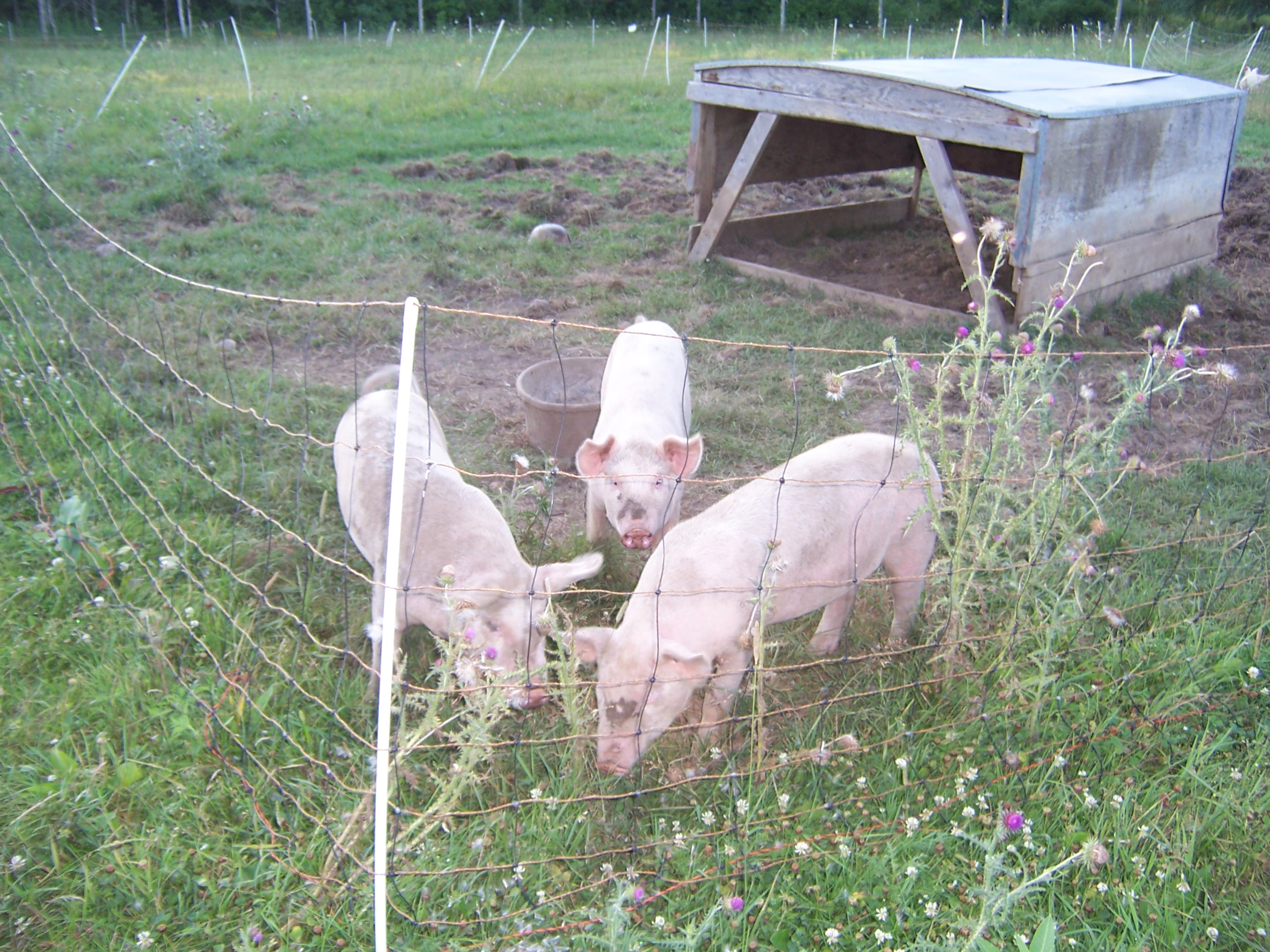 Electromesh fencing to keep the piggies contained
Electromesh fencing to keep the piggies containedHow to Feed Your Pigs
While pasture foraging is a great supplement, you will also need to provide a balanced, (preferably) organic, non-GMO feed to make sure your piggies get adequate nutrition.
We buy a grain-based mash from a local supplier, and mix it with fresh water to make a soupy mix the pigs will slurp up happily. Start with a hog grower ration (16% protein) fed twice a day. Keep the piggies on grower feed until they are about 150-175 lbs., then switch to a lower-protein hog finisher (14% protein).
I like to use two 5-gallon water tubs for 4 piggies. Make sure they get lots of water in their feed as well.
Ensure a clean and reliable water source within the pasture. Pigs need constant access to fresh water for hydration and to maintain their well-being.
Raising Pigs - The Economics
You can expect to spend about $250-$300 per pig on organic feed to raise them to finish weight, and in the range of $100-$150 at the abattoir for kill cut and wrap, depending on the cuts.
At a hanging weight of 160 lbs., this brings your cost per pound to about $2.50-$3.00. I sell my organic
pastured pork for $4.50/lb. hanging weight for a side or a whole carcass
and I easily sell all I raise.
Conclusion: Pigs are a great sideline for the small grower
Raising pigs on pasture as a new country dweller or small grower is profitable and supports sustainability and self-sufficiency. By raising pigs in a healthy environment, implementing sustainable practices, and considering the economic aspects of your operation, your pastured pigs can be a valuable addition to your small operation.
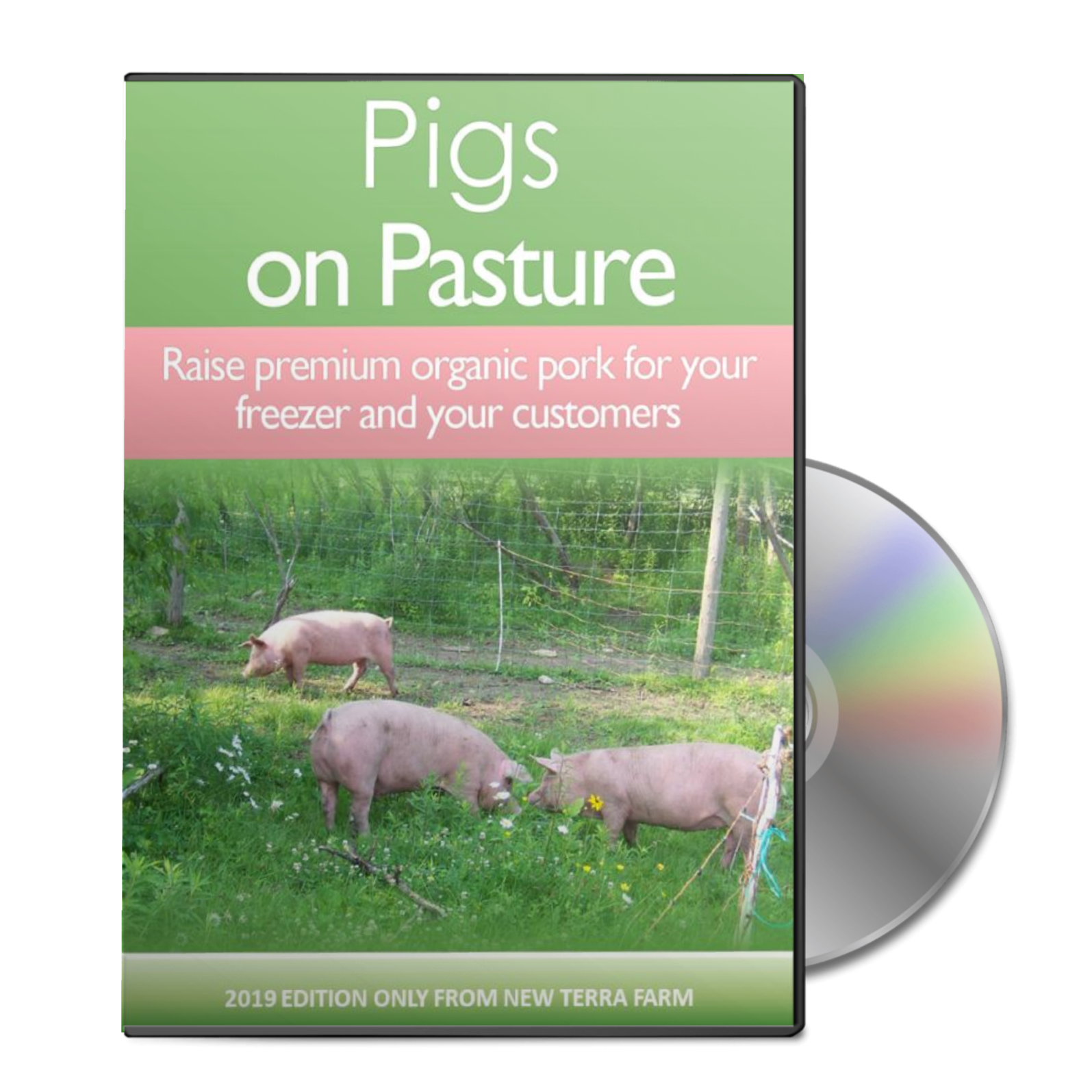 Book and software $10
Book and software $10Bootstrap Bacon! Raising pigs is a great complement to your market garden. Piggies will root up the soil and clean up garden waste, turning old veggies into delicious organic PREMIUM PORK.
My latest edition also includes my fabulous Porkulator spreadsheet. I couldn't find a tool to help me calculate costs and profits for my pastured piggies, so I had to create one. If you want the full story of how to raise a pig profitably and sustainably, check it out.
Or for an even better deal click here
- Home
- Raising Pigs
- How to raise a pig
Recent Articles
-
Homesteader Book Bundle only from New Terra Farm
Apr 24, 24 08:08 AM
If you have a hankerin' for country living, my best value Homesteader Book Bundle is a great resouirce. -
Grow the 10 most profitable vegetables in your market garden
Apr 21, 24 08:32 AM
Special Report - Grow the 10 most profitable vegetables using the tools and techniques of pro gardeners -
New Terra Farm market gardening book shows you success step-by-step
Apr 03, 24 01:29 PM
Start-up, market and manage a successful organic market garden with my Bootstrap Market Gardening Book
